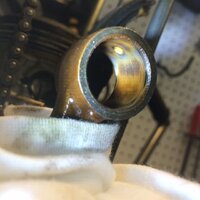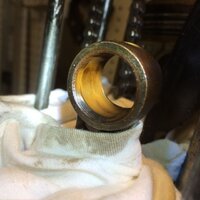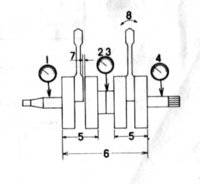Jon M
XS650 Member
As I've been going on about in another thread I'm trying to find the source of a strange engine rattle (there are lots of those threads on here! ha ha). I've pulled the jugs and the pistons look fine. They say '25' on the top which I think means first oversize so the PO must have replaced them when he did a rebuild about 15,000 km ago.
The wrist pin pushed out very easily. I oiled it and slid it into the con-rod to see if there was any play. There is, but I'm not sure I'm checking it right. I put it into the small end and pushed it up on one and and down on the other. Then wiggled it like that. There is clearly some play but is this the right way to determine this?
What do you think?
The wrist pin pushed out very easily. I oiled it and slid it into the con-rod to see if there was any play. There is, but I'm not sure I'm checking it right. I put it into the small end and pushed it up on one and and down on the other. Then wiggled it like that. There is clearly some play but is this the right way to determine this?
What do you think?



